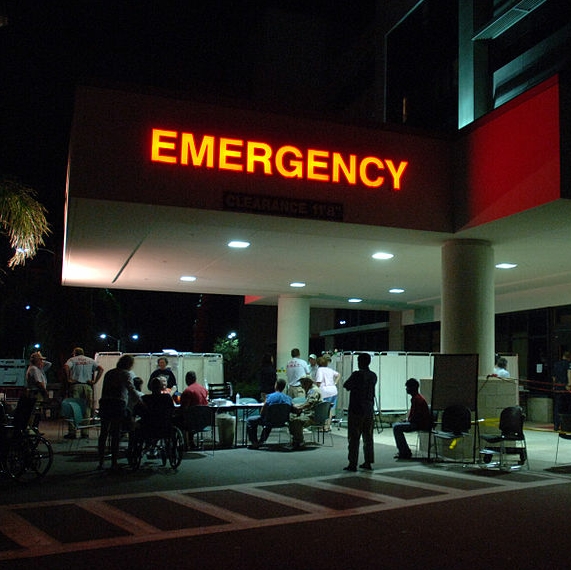Would You Support a Boycott of CVS?
/By Pat Anson, Editor
One of the most talked about issues in the pain community over the last two weeks has been CVS Health’s announcement that its pharmacists would soon start restricting doses of opioid pain medication and limit the supply of opioids for acute pain to 7 days.
The policy only applies to customers enrolled in CVS Caremark’s pharmacy benefit management program, but it quickly triggered an online backlash from pain patients – including many who called for a boycott of CVS.
“I refuse to patronize companies that practice medicine without a license,” wrote Jeannette on PNN’s Facebook page.
“Don’t go there anymore. Hit them in their pocketbook,” wrote Lauren.
“I very rarely use a CVS and will never go there for prescriptions or anything else,” said Jackie.
“I left CVS years ago for Walgreens and I’m guessing many more will be doing so,” wrote Amanda.
"CVS has some nerve. The use of opioids, or any other drug, really, is up to the doctor and his or her patients, not a pharmacist. This is a terrible precedent, which will drive an even bigger wedge between physicians and patients,” cardiologist Arthur Kennish, MD, told the American Council on Science and Health.
The CVS boycott soon had its own hashtag on Twitter.
“Wrong way to handle, CVS! I will join the #BoycottCVS. You make it more difficult for the sick w/ no impact on the crisis,” Stephanie tweeted.
The online outrage even spilled over onto CVS’ Facebook page, where many negative posts were apparently deleted by the company.
“CVS Pharmacy, why did you take down all your Posts and comments regarding your big announcement over overriding doctor's orders and limiting patients' rights to their pain medication?” asked Lauri. “Where did they all go?”
People are so passionate about this issue that we started an online poll asking if they would support a boycott of CVS. Click here if you’d like to participate.
Would a Boycott Work?
But while there’s plenty of online enthusiasm for a boycott, it’s unlikely to be effective without the support of patient advocacy groups. An informal survey of pain organizations by PNN found most were critical of CVS’ decision, but opposed to a boycott.
“I think boycotting CVS is not a good idea. I think a better idea is working with them for better care and finding the good in what they are doing and amplifying the bad. They want better education, they want better disposal, and many other things we all fight for,” said Paul Gileno, President of the U.S. Pain Foundation. “I don't think a boycott would work or be effective and can come across in a negative way. We need a loud conversation with CVS.”
“I don’t typically like boycotts” said Barby Ingle, President of the International Pain Foundation and a PNN columnist. “But if enough people have a bad experience or don’t like the CVS policies, they will see a drop in the market and will have to reevaluate what their policies will be.
“I wouldn’t call it a boycott, I would call it a shift in patients understanding that we have power and that we can choose to go to the healthcare places that fulfill our needs. Unless CVS changes their practices, I can see them continuing to lose business.”
Penney Cowan of the American Chronic Pain Association did not respond to a request for comment.
One patient advocate who gave full support for a boycott was Cynthia Toussaint, the founder of For Grace, a non-profit that supports women in pain.
“The lack of patient advocacy support for the boycott is totally surprising,” Toussaint wrote in an email. “We’ve all been beating the ‘don’t get between a doctor and a patient’ drum for years, and now that we can put our names behind that, we’re being sheepish.
“For Grace is ON BOARD with the boycott! This is chilling news for the pain world - and I hope our support helps many people. We understand CVS’s very real concern about the opioid crisis, but this new policy is too heavy handed and will greatly harm the chronic pain community!”
CVS is not the first pharmacy to restrict access to opioid medication. In 2013, Walgreens gave its pharmacists a “secret checklist” to help them screen patients with opioid prescriptions. Any red flags, such as a prescription written by a new doctor or a patient paying in cash, could result in a prescription not being filled. The policy was implemented after Walgreens was fined $80 million by the Drug Enforcement Agency for violating the rules for dispensing controlled substances.
CVS has also been fined hundreds of millions of dollars for violations of the Controlled Substances Act and other transgressions, many of them involving opioid medication.
A Florida pharmacist who was fired this year by Sam’s Club for not following the company's opioid policy says pharmacies are driven by profit, not patient care, and a boycott is unlikely to change their bottom line.
“Patients won't need to boycott. CVS doesn't want the business anyway,” says Karl Deigert, who was fired after complaining that patient rights were being violated at Sam’s Club, which is owned by Walmart. “Corporations are only acting in their own best interest and have no concern for the patient. Patients can save their breath and energy as any complaints filed will fall on deaf ears.
“Overzealous corporate policy makers have no desire or interest to protect the patients' well-being. Their policy making is self-serving to protect their assets from DEA scrutiny and monetary penalties. The corporations and the majority of retail pharmacists simply do not care to help the chronic pain patient population.”
The new opioid policy at CVS doesn’t go into effect until February 1, 2018. But CVS Caremark is already tightening the rules for some opioid prescriptions.
A Caremark client who has been getting fentanyl pain patches at CVS for years was recently notified by letter that new limits are being placed on the patches “to help ensure that your use of opioid medication for pain management is safe and appropriate.”
But is it really about safe and appropriate use?
The letter goes on to say the patient will still be able to get the fentanyl patches, but without prior authorization they “will have to pay 100 percent of the cost.”






























